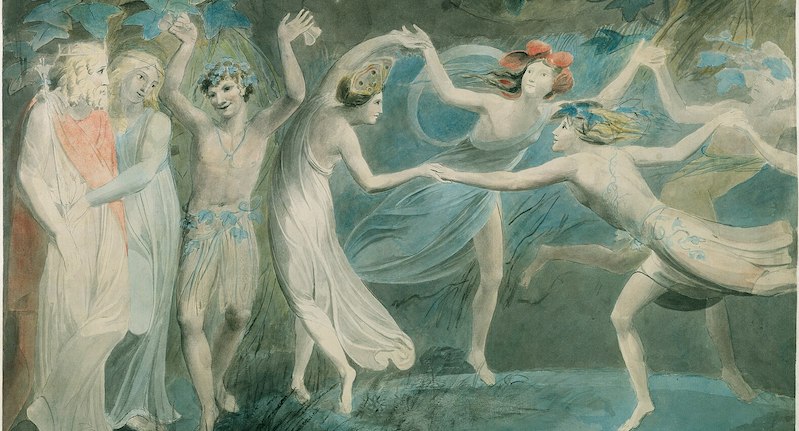Cellman
2003 - Painting (Painting)
200 x 200 x 5 cm
Fabrice Hyber
The works of Fabrice Hyber provoke divergent ways of thinking. In a kindred spirit with Raymond Hains, image and writing are intertwined. Drawings and diagrams are visually direct, as shown in the series of “Peintures Homéopathiques” (“Homeopathic Paintings”), collages covered in transparent resin (1986-1988). In Cellman (2003) on the bottom right, stones and the arrows refer to skipping stones of “thinking”. A recurring human figure, commonly associated with Hyber’s theatrical world, is shown in Cellman and also L’homme de Bessines (1990). The artist uses writing as an engine of formal and semantic associations (“galet, galette, cellman, bulle, cellule “). The figure recalls that the body is a collection of cells. Like in the work Artère, le jardin des dessins ( Artery, the garden of drawings, a monument commissioned by Sidaction, Parc de la Vilette, Paris), the artist captures the inner workings of the body through schemas.
In each of his self-portraits, Fabrice Hyber (he removed the last “t” in Hybert in 2004) is elusive. This has been expressed in the photo “C’est le moment de se préparer à de nouvelles expériences” (It’s time to prepare for new experiences) (1987), or when we look at the upside down, hanging by one foot in “Traduction, le plus gros savon du monde” (Translation, the biggest soap in the world) (1991). “I? am an alien! ” says the artist. “Games and shifts are the only things able to face any kind of fundamentalism. Trade, commerce, image and poetry are means of osmosis. Through them gradually you can set up all of the ways to increase life beyond death. It is necessary to mix time, upgrade products, and imagine that works die in order to be assimilated then revisited. A work is absolutely not precognitive but always from here” said Fabrice Hyber in conversation with Thierry Laurent. Fabrice Hyber was born in 1961 in Luçon, France. He lives and works in Paris.
Colors:
Related works sharing similar palette

© » KADIST
Miljohn Ruperto
2009Miljohn Ruperto’s silent video work Appearance of Isabel Rosario Cooper is an archive of ghosts...

© » KADIST
Yee I-Lann
20207-headed Lalandau Hat by Yee I-Lann is an intricately woven sculpture evoking the ceremonial headdress worn by Murut men in Borneo...

© » ARTS EQUATOR
SEE WHAT SEE: BOYS' LOVE (BL) DRAMAS | ArtsEquator Thinking and Talking about Arts and Culture in Southeast Asia ArtsEquator Viewpoints November 13, 2021 By Lainie Yeoh I grew up in an era where queer films were rare exceptions and it was your holy gay-af duty to watch all the ones you could access...

© » SOUTH CHINA MORNING POST
South Korean artist Yi Yi Jeong Eun’s impasto oil paintings – now on show in Hong Kong – convey nature in its many forms | South China Morning Post Advertisement Advertisement Art + FOLLOW Get more with my NEWS A personalised news feed of stories that matter to you Learn more “There, Breaking Through The Ground” (2023) by Yi Yi Jeong Eun...

© » KADIST
Larry Bell
1979Like many of Larry Bell’s works, VFGY9 deals primarily with the viewer’s experience of sight...

© » KADIST
Ranu Mukherjee
2011Conceived as a large-scale mural-like projection, Color of History, Sweating Rocks is a neo-futuristic, hybrid film that combines cinematic language, collage, animation, and inventive forms to highlight the plight of the peoples of the Sahara—and refugees in general—who have been displaced by oil-mining....

© » HYPERALLERGIC
Citing Silencing of Arab Voices, Artists Cut Ties With Art Canada Institute Skip to content Rana Nazzal Hamadeh, "Untitled" (2020), color digital photograph, inkjet on vinyl, 60 inches x 120 inches (image courtesy of the artist) A number of artists and curators have said they are cutting ties with Art Canada Institute (ACI) after the arts nonprofit was accused late last month of attempting to suppress the voices of a group of Arab and Muslim artists...

© » LITHUB
On the Serious Business of 19th-Century Fairy Paintings ‹ Literary Hub Craft and Criticism Fiction and Poetry News and Culture Lit Hub Radio Reading Lists Book Marks CrimeReads About Log In Literary Hub Craft and Criticism Literary Criticism Craft and Advice In Conversation On Translation Fiction and Poetry Short Story From the Novel Poem News and Culture History Science Politics Biography Memoir Food Technology Bookstores and Libraries Film and TV Travel Music Art and Photography The Hub Style Design Sports Freeman’s The Virtual Book Channel Lit Hub Radio Behind the Mic Beyond the Page The Cosmic Library The Critic and Her Publics Emergence Magazine Fiction/Non/Fiction First Draft: A Dialogue on Writing Future Fables The History of Literature I’m a Writer But Just the Right Book Keen On The Literary Life with Mitchell Kaplan New Books Network Read Smart Talk Easy Tor Presents: Voyage Into Genre Windham-Campbell Prizes Podcast Write-minded Reading Lists The Best of the Decade Book Marks Best Reviewed Books BookMarks Daily Giveaway CrimeReads True Crime The Daily Thrill CrimeReads Daily Giveaway Log In Via Pegasus Books On the Serious Business of 19th-Century Fairy Paintings Jennifer Higgie Considers the Significance of a Mystical Artistic Tradition By Jennifer Higgie January 5, 2024 Featured Image: Oberon, Titania and Puck with Fairies Dancing, by William Blake Much like the present moment, the nineteenth century was a time of rapid social and technological change and political turmoil...

© » DIANE PERNET
Conversations: Tracey Emin and Courtney Willis Blair | White Cube – A Shaded View on Fashion On the occasion of Tracey Emin’s exhibition ‘Lovers Grave’ at White Cube New York, the artist was joined in conversation with Courtney Willis Blair, US Senior Director, White Cube, at The Prince George Ballroom in Manhattan...

© » KQED
SF IndieFest Is a Valentine to Movies and Movie Lovers | KQED Skip to Nav Skip to Main Skip to Footer upper waypoint The Do List SF IndieFest Is a Valentine to Movies and Movie Lovers Michael Fox Feb 8 Save Article Save Article Failed to save article Please try again Email Steve Zahn in the SF IndieFest opening night film, 'LaRoy,' playing Feb...

© » ARTS EQUATOR
Cambodia Town Film Festival presents perspectives beyond ‘Crazy Rich Asians’ (via Long Beach Post) | ArtsEquator Thinking and Talking about Arts and Culture in Southeast Asia Articles September 17, 2018 Kilong Ung was just a teenager when the Khmer Rouge overtook his hometown of Battambang in Cambodia...

© » KADIST
Leticia Ramos
2021Leticia Ramos’s film DROPSPIKE is the second of a five-part film project entitled STORIES OF THE END OF THE WORLD ...

© » ARTS EQUATOR
Cakap-Cakap: Interview with Anaïs López for The Migrant | ArtsEquator Thinking and Talking about Arts and Culture in Southeast Asia Articles April 28, 2021 In this month’s Cakap-Cakap (chit-chat), ArtsEquator speaks with visual artist Anaïs López about her multimedia exhibition The Migrant which is currently showing at the Chapel Gallery, Objectifs...

© » KADIST
Clarissa Tossin
2017Clarissa Tossin’s film Ch’u Mayaa responds to Frank Lloyd Wright’s Hollyhock House (constructed 1919–21) in Los Angeles, an example of Mayan Revival architecture...

© » FLASH ART
Twilight Oddities, Real Nightmares, Queer Errands, and Other Daydreams: The Gothenburg Biennial | | Flash Art Flash Art uses cookies strictly necessary for the proper functioning of the website, for its legitimate interest to enhance your online experience and to enable or facilitate communication by electronic means...

© » KADIST
Karthik Pandian
2012Filmed in Morocco, the film Atlas by Karthik Pandian continues his investigation into history, site and monument...




